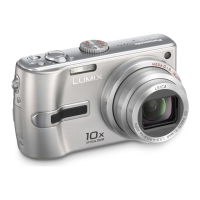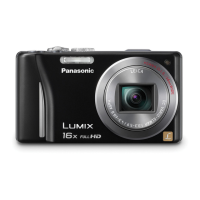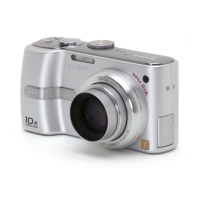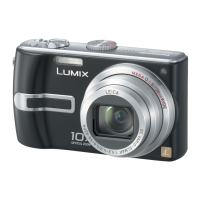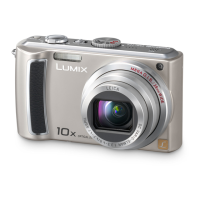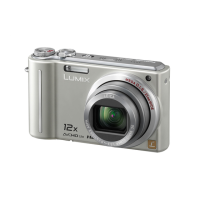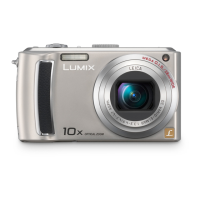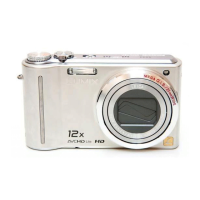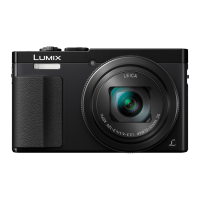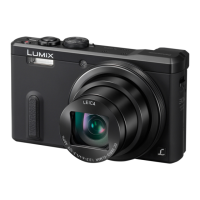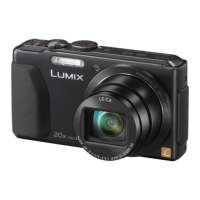Why does my Panasonic Lumix DMC-TZ25 Digital Camera take some pictures when I press the shutter button just once?
- DDouglas Blair DDSSep 9, 2025
The camera might be set to use [Auto Bracket] or [Burst].
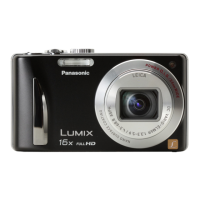
Why does my Panasonic Lumix DMC-TZ25 Digital Camera take some pictures when I press the shutter button just once?
The camera might be set to use [Auto Bracket] or [Burst].
Why is my Panasonic Lumix DMC-TZ25 Digital Camera not working even when turned on?
The camera may not work even if the power is turned on if the battery is not inserted correctly or needs recharging.
What to do if my Panasonic Lumix DMC-TZ25 cannot record pictures?
If your Panasonic Digital Camera cannot record pictures, ensure that the REC/PLAY switch is set to (record). Also, the built-in memory or card might be full. Free up space by deleting unwanted pictures.
Why does the charging lamp turn off early on my Panasonic Lumix DMC-TZ25 Digital Camera?
The charging lamp might turn off before the battery is fully charged if charging is being performed in a place with extremely high or low temperature. Reconnect the USB connection cable and retry charging in a place where the ambient temperature is 10 °C to 30 °C (50 °F to 86 °F).
Why can't I view pictures on my Panasonic Lumix DMC-TZ25 and it says there are no recorded pictures?
If you cannot view pictures and the camera indicates there are no recorded pictures, ensure the REC/PLAY switch is set to (play). Also, check if there are no pictures in the built-in memory or card. If pictures were played from a card when inserted, they will be played from built-in memory if not. If the file name of the picture has been changed on a computer, it cannot be played back on the camera. Finally, verify that the [Playback Mode] is set to [Normal Play].
Why are my recorded pictures blurred with my Panasonic Lumix DMC-TZ25 Digital Camera?
Recorded pictures may appear blurred because the shutter speed is slower in dark locations, making the Optical Image Stabiliser less effective. To improve this, hold the camera firmly with both hands, keeping your arms close to your body.
Why does the monitor flicker indoors on my Panasonic Lumix DMC-TZ25?
The LCD monitor may flicker for a few seconds after turning on.
Why does my Panasonic Lumix DMC-TZ25 blacken red areas of recorded pictures?
When digital red-eye correction is operating, if a subject is recorded that has skin coloured areas with red areas inside, the digital red-eye correction function may blacken the red areas.
Why does the LCD monitor shut off even if the Panasonic Lumix DMC-TZ25 is turned on?
The LCD monitor might shut off even if the power is on because [Sleep Mode] is activated, or the battery needs recharging. Press the shutter button halfway to release [Sleep Mode].
Why does my Panasonic Lumix DMC-TZ25 Digital Camera switch off as soon as I turn it on?
Your Panasonic Digital Camera might switch off as soon as you turn it on if the battery needs recharging or if [Sleep Mode] is activated. Press the shutter button halfway to release [Sleep Mode].
| Megapixel | 12.1 MP |
|---|---|
| Camera type | Compact camera |
| Sensor type | Live MOS |
| Image stabilizer | Yes |
| Total megapixels | 12.8 MP |
| Image sensor size | 1/2.3 \ |
| Supported aspect ratios | 3:2, 4:3, 16:9 |
| Maximum image resolution | 4000 x 3000 pixels |
| Still image resolution(s) | 480 x 480, 640 x 360, 640 x 424, 640 x 480, 1536 x 1536, 1600 x 1200, 1920 x 1080, 1920 x 1920, 2048 x 1360, 2048 x 1536, 2448 x 2448, 2560 x 1440, 2560 x 1712, 2560 x 1920, 2992 x 2992, 3264 x 1840, 3264 x 2176, 3264 x 2448, 4000 x 2248, 4000 x 2672, 4000 x 3000 |
| Digital zoom | 4 x |
| Optical zoom | 16 x |
| Extra/Smart zoom | 31.3 x |
| Focal length range | 4.3 - 68.8 mm |
| Maximum aperture number | 5.9 |
| Minimum aperture number | 3.3 |
| Number of aspheric elements | 3 |
| Lens structure (elements/groups) | 12/10 |
| Maximum focal length (35mm film equiv) | 384 mm |
| Minimum focal length (35mm film equiv) | 24 mm |
| Focus | TTL |
| Focus adjustment | Auto |
| Auto focusing (AF) modes | Continuous Auto Focus, Tracking Auto Focus |
| Light metering | Centre-weighted, Evaluative (Multi-pattern), Spot |
| ISO sensitivity | 100, 200, 400, 800, 1600, 3200, 6400, Auto |
| Light exposure modes | Aperture priority AE, Manual, Shutter priority AE |
| ISO sensitivity (max) | 6400 |
| ISO sensitivity (min) | 100 |
| Light exposure control | Program AE |
| Light exposure correction | ± 2EV (1/3EV step) |
| Fastest camera shutter speed | 1/4000 s |
| Slowest camera shutter speed | 15 s |
| Flash modes | Auto, Forced off, Forced on, Red-eye reduction, Slow synchronization |
| Flash range (tele) | 1 - 3.5 m |
| Flash range (wide) | 0.6 - 6.4 m |
| Power source type | Battery |
| Video resolutions | 640 x 480, 1280 x 720, 1920 x 1080 pixels |
| Video formats supported | AVCHD, MP4 |
| Maximum video resolution | 1920 x 1080 pixels |
| Analog signal format system | NTSC, PAL |
| Audio system | Mono |
| Memory slots | 1 |
| Internal memory | 70 MB |
| Compatible memory cards | SD, SDHC, SDXC |
| Field of view | 100 % |
| Display diagonal | 3 \ |
| Display resolution (numeric) | 460000 pixels |
| USB version | 2.0 |
| HDMI version | - |
| USB connector | Mini-USB B |
| HDMI connector type | Mini |
| Scene modes | Children, Night landscape, Night portrait, Panorama, Portrait, Sports, Sunset, Underwater, Landscape (scenery) |
| Image editing | Crop, Resizing |
| Photo effects | Black&White, Sepia, Vivid |
| White balance | Auto, Cloudy, Daylight, Incandescent, Shade |
| Shooting modes | Aperture priority, Movie, Program, Scene |
| Camera playback | Movie, Single image, Slide show, Thumbnails |
| Self-timer delay | 2, 10 s |
| Camera file system | DCF, DPOF 1.1, Exif 2.3 |
| On Screen Display (OSD) languages | DEU, ENG, ESP, FRE, ITA, JPN, RUS |
| Battery voltage | 3.6 V |
| Battery capacity | 895 mAh |
| Battery life (CIPA standard) | 260 shots |
| Product color | Red |
| Cables included | AC, USB |
| Depth | 33.4 mm |
|---|---|
| Width | 104.9 mm |
| Height | 57.6 mm |
| Weight | 185 g |
| Weight (including battery) | 208 g |
Essential guidelines for safely handling the camera and avoiding damage.
Procedures for dealing with lens or screen fogging due to temperature changes.
Information about optional items like memory cards and their availability.
Detailed explanation of the cursor button's navigation and selection functions.
Guidance on using genuine batteries and safety concerns with counterfeits.
Step-by-step instructions for inserting and removing the camera's battery.
Explains charging via AC adapter or USB, and interpreting charging lamp status.
Details on how many still and motion pictures can be recorded based on card size.
Instructions for safely inserting and removing memory cards from the camera.
Explains using built-in memory versus compatible SD cards for saving files.
Tables showing capacity for still pictures and motion pictures based on size and quality.
Guide for setting the camera's clock for the first time.
Instructions on how to adjust the clock after initial setup.
Overview of powering on, selecting modes, and taking a picture.
Proper camera holding, aiming, shooting, and viewing pictures.
How to take pictures using custom settings in Program AE mode.
Guide on focusing when the subject is not in the center of the frame.
Using automatic settings for effortless picture taking.
Explains automatic scene recognition, Happy colour, and Motion Deblur.
Using AF Tracking and understanding restrictions in Intelligent Auto mode.
Step-by-step guide to start and stop recording video clips.
Explains AVCHD and MP4 formats and their playback compatibility.
Capturing still images during video recording and using burst function.
Viewing individual pictures in the standard playback mode.
Playing back video clips and controlling playback functions.
Magnifying pictures during playback and viewing multiple images simultaneously.
Browsing pictures by recording date using a calendar interface.
How to delete the currently displayed picture from memory.
Options for deleting multiple pictures or all pictures at once.
Step-by-step guide for navigating and selecting menu options.
Explains the different menus ([Rec], [Motion Picture], [Setup], [Playback]).
How to access and use the Quick Menu for fast settings adjustments.
Setting the clock, date, and managing world time for travel.
Adjusting LCD brightness, volume, custom settings, and LCD modes.
Using guide lines, histogram, video record area, and zoom resume features.
Managing battery life with economy modes and auto review settings.
Resetting file numbers, camera settings, and USB connection modes.
Configuring video output, VIERA Link, and 3D playback settings.
Settings for picture rotation, firmware version, and formatting storage.
Changing the display language and viewing camera function demonstrations.
How to use the zoom lever to adjust magnification and focus.
Explains Optical, Extra Optical, i.ZOOM, and Digital Zoom capabilities.
Guide to different flash modes (Auto, Red-Eye, Forced On/Off) and their uses.
Details on which flash modes are available in different shooting modes.
Using AF Macro and Tele Macro for close-up shots.
Information on the shortest recording distances for macro shots at different zoom levels.
How to set and use the self-timer for delayed shots.
Adjusting exposure manually for brighter or darker pictures.
Using Auto Bracket to take multiple shots with varying exposures.
Controlling depth of field by setting aperture, with automatic shutter speed.
Controlling shutter speed (Shutter-Priority) or both aperture and shutter speed (Manual Exposure).
Applying various artistic effects to pictures while previewing them.
How creative effects apply to motion picture recording.
Taking pictures with optimized settings for specific scenes.
Explains Portrait, Soft Skin, Scenery, Panorama Shot, Sports, Night modes.
Details HDR, Food, Baby, Pet, Sunset, High Sens., Glass Through, Underwater modes.
How to capture 3D still pictures by moving the camera horizontally.
How to register and save custom camera settings for quick recall.
How to select and use registered custom settings via the mode dial.
Explains different burst speed settings and their picture counts.
Information on how picture size affects burst shooting and limitations.
Explains how the camera detects and recognizes faces during recording and playback.
Step-by-step guide to register faces, names, and ages for recognition.
Turning off the feature and editing/deleting registered person information.
Recording the date and location of pictures taken during travel.
Setting the camera's clock to local time at travel destinations.
Guide to inputting text for features like Face Recognition and Travel Date.
Adjusting picture aspect ratio and pixel dimensions for still photos.
Setting picture quality and ISO sensitivity for optimal results.
Setting white balance for accurate color reproduction under different lighting conditions.
Explains Face Detection, AF Tracking, and area focusing modes.
Using quick autofocus for sharper images, even when the shutter isn't pressed.
Adjusting light measurement and automatic contrast/exposure correction.
Setting minimum shutter speed and using Intelligent Resolution for sharper images.
Configuring digital zoom, burst shooting, color effects, and AF assist lamp.
Activating red-eye correction and image stabilization features.
Adding date stamps to pictures and setting the camera clock via the Rec menu.
Selecting the recording format (AVCHD or MP4) for motion pictures.
Choosing the picture size, bit rate, and frame rate for motion pictures.
Setting continuous autofocus and reducing wind noise during recording.
How to view and manage pictures recorded in burst mode.
Choosing how to view pictures (All, Picture Only, Motion Pic Only, etc.).
Configuring slide show effects, music, and playback operations.
Refining picture viewing by category or date.
Automatically adjusting color and brightness of still pictures.
Applying various creative effects for picture retouching.
Selecting pictures for uploading to image-sharing websites.
Adding titles to favorite still pictures for easy identification.
Stamping dates, names, and locations onto still pictures.
Splitting motion pictures into two parts to keep desired scenes.
Reducing picture size for email or web use.
Enlarging and cropping unwanted areas of still pictures.
Marking and playing back favorite pictures, or deleting non-favorites.
Configuring print settings for DPOF-compatible shops or printers.
Protecting pictures from deletion and editing face recognition data.
Copying pictures between the built-in memory and memory card.
How to connect the camera to a TV using HDMI or AV cables.
Important notes on using HDMI/AV cables and SD card slots for playback.
Explains VIERA Link for automatic device linking and remote control operation.
Details on power off, automatic input select, and troubleshooting VIERA Link.
How to connect to a 3D TV and view recorded 3D images.
Notes on 3D playback limitations, potential effects, and switching to 2D.
Copying pictures to recorders by inserting the SD card.
Instructions for using PHOTOfunSTUDIO to copy pictures to a computer.
Details on PC requirements and compatibility for connecting the camera.
Step-by-step guide for connecting the camera to a computer via USB.
Explains the folder and file naming conventions used on the computer.
Using the LUMIX Image Uploader tool for sharing pictures online.
Connecting directly to a PictBridge printer for printing pictures.
Selecting and printing multiple pictures using various options.
Configuring print options like date, number of prints, and layout on the camera.
How to print dates and text information on pictures.
Explains the various icons and information shown on the LCD during recording.
Details the information displayed on the LCD during picture playback.
Explains common messages like card errors and general system errors.
Explains error messages related to recording, card format, and folder creation.
Solutions for common problems related to battery, power, and LCD monitor.
Troubleshooting tips for blurred pictures, interference, and recording stops.
Resolving problems with LCD brightness, flickering, and flash not emitting.
Troubleshooting picture rotation, viewing errors, and incorrect date displays.
Addressing playback problems, TV output, and computer connectivity issues.
Further troubleshooting for VIERA Link, computer connection, and printing problems.
Resolving issues with camera noises, clock, zoom, and file numbers.
Cautions for using the camera and protecting it from environmental factors.
Guidelines for handling memory cards and maintaining the LCD monitor.
Notes on AC adapter, lens care, tripod use, and 3D viewing precautions.
Handling personal data stored on the camera and during service.
